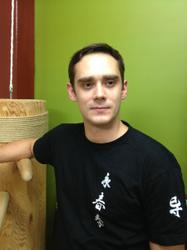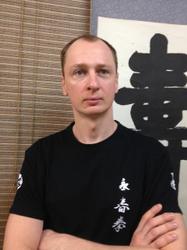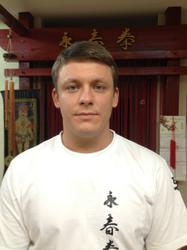Master Te Kong: Nguyen Te Kong
Eldest brother Yuyen Chai Van quickly gained the reputation as a threatening fighter. Working in a security agency contributed to this. During the civil war, working as a bodyguard or one escorting goods was very dangerous. You had to deal with enemy martial groups as well as bandits. During his stint in the security business, Vin Chun Kuen Yuyen Chan Van developed a real warrior’s character: to lose the fight meant to lose life. He combined his work with teaching. Foshan City houses the Museum of Regional Studies where there is a Gun Fu Masters Wall of Fame’. On a stand devoted to the Yuyen brothers there are the names of several of Yuyen Chai Van’s Chinese students. The names of the Yuyen brothers’ various teachers are also listed on the stand. This is important as there has always been a distorted historical version of the brothers’ learning, wrongly naming Doctor Leung Chzhan as Yuyen Cnah Van’s teacher.
Chinese and Vietnamese sources tell the tale of a martial arts Master from the Jiangxi province who arrived in Foshan. He was in a very aggressive mood. He wanted to call Yuyen Chan Van to a death duel. Chai Van wanted to have nothing to do with this man. He continued to refuse the duel wish until the aggressor became overtly offensive. Both sides signed a non-accusation agreement (exonerating the victor should the other party suffer death) and then the fight happened. Chai Van’s opponent was equipped with an iron pole weighing around 13 kg. Chan Van’s weapon was a specially treated bamboo pole (called steel bamboo’). Responding to a sharp lunge by his opponent aiming at his head, Chai Van used his pole and threw his opponent’s pole upwards. Having found himself on the ground, the stunned attacker left his weapon and retreated. Obviously such skill demands extraordinary technique. Yuyen Chai Van disarmed his opponent using Hua’, a Chinese Gun Fu term meaning neutralization’ or change force and radically re-direct’.
In 1936, at the age of 59, Yuyen Chai Van, invited by the Association of Chinese Emigrants in Vietnam, arrived in Hanoi. Four of his students remained in China. The best known of them was Yui Chai. Chai Van’s first students in Vietnam were Chinese. The cost of Wing Chun Quen classes was very high so only wealthy people could afford them. Yuyen Chai Van later began to teach Vietnamese people from aristocratic families and middle classes too.
On the indication of Hanoi’s Wing Chun Quen Masters, Yuyen Chan Van named two of his students as those who had achieved total success in Gun Fu. One of them was a China man, an emigrant, Tyen, from Huan Long Street. Another was a Vietnamese man called Chan Van Fung from Kua Bak Street.
Yuyen Chai Van always taught in closed spaces or in the garden, when there was nobody around. Nguyen Te Kong (often called Yuyen Chai Van in Vietnam) taught all his students individually during the day at a pre-appointed time. The Master strictly adhered to purity of information’ family traditions and forbade students from spreading information about Wing Chun Quen.
There are many legends and rumours about Nguyen Te Kong. Among Chinese people he was known by the nickname Pitted Chai’. Many were terrified when this name was mentioned. They say that Nguyen Te Kong was involved in a form of security in the transportation of opium. In the South-East Asian countries the opium trade was almost legal. In Hanoi and the seaside region of Haifon, they still recount the story of how Nguyen Te Kong got involved in a fight with a Haifon bandit group called the Black Dragons’. The Black Dragons tried to seize the valuable cargo. Using big double knives (Bart Cham Dao) he killed many attackers, the others choosing to escape. Witnesses insisted that there were about fifteen attackers.
In Hanoi Nguyen Te Kong lived, trying not to attract any attention to himself. He became talked about’ after a case in the central market. When Te Kong was at the market, several racketeers beat a trader who refused to pay for their patronage. Friends of the trader tried to rescue him. And so a fight ensued. The fiery bandits beat everybody who got involved and attempted to do the same to Te Kong. The fight finished very quickly. Te Kong knocked all the attackers down and disappeared from the scene.
A fight with some Japanese aggressors, in which Nguyen Te Kong took part, also initiated many stories about him. After the fight, the Japanese bodies were left on the ground and the legendary Pitted Chai left the scene intact and unharmed. It is supposed that the leader of a celebrated group of partisans, known as the general’, was one Luong Vu Te, who was believed to be Nguyen Te Kong himself.
Another interesting story occurred in 1941. Nguyen Te Kong was once teaching Wing Chun Kuen to a group of students. A young aristocrat, called Nguyen Zui Hai, who succeeded in Vietnamese Hai Bai Gun Fu, arrived to have a look at the lesson. He considered himself to be a very strong man and the best fighter in Hanoi. On the streets he had the nickname Hai the Japanese’ because of his forceful character in life and in battle. Having observed the slow and smooth motions of Te Kong’s students, Hai the Japanese didn’t believe in the effectiveness of such a method and impudently offered Master Te Kong to try their strength on each other. He asked if the Chinese man could withstand a blow of his fist. Te Kong opened his jacket and having opened a thin chest ordered Hai to hit him three times. Hai took a fighting stance and hit the Master with all the power using his fist. The audience could see that as soon as the fist reached its target, Te Kong’s body only swayed slightly, but he remained standing on his feet and didn’t take any steps back. Hai the Japanese was thrown back by the force of his own blow. He knocked against a cupboard, which served as an altar. It was then revealed that he broke his hand and wrist. All of this prompted him to rethink his life and martial arts outlook. After this treatment’ he became a student of Nguyen Te Kong.
Nguyen Te Kong embodied in life the principle of Chinese martial arts stating that 400 grams can deflect a ton’ (4 ounces can deflect a ton), which means: a weak effort neutralizes the attack’. Such a level of skill can only be achieved by a small percentage of the many thousands who are practicing Gun Fu.
In his free time Nguyen Te Kong loved to walk along Hanoi’s streets. At that time Vietnam (Annam) was a French colony (French Indochina) and, in the city, you could meet many off-duty soldiers. Having spotted Te Kong walking slowly in the street, a group of rash solders surrounded him. The foreigners began to compete in wit, making fun of Te Kong, who remained calm and looked at them silently. Such coolness wounded’ and bothered the Frenchmen. One of them grabbed Te Kong’s shoulder and tried to throw him to the ground. Te Kong usually kept his hands locked with each other and hidden in the wide shoulders of his traditional Chinese gown. Without taking his hands out of the sleeves he made a light move with his elbow and the attacker found himself on the ground. The offenders sensed it was better to leave the elderly Chinese man alone and not to tempt fate. Having lifted their friend up off the ground, they retired home. And Te Kong continued walking!
 A senior student of the Hanoi school, Chan Van Fung once told that Nguyen Te Kong taught in a traditional manner, characteristic of Wing Chun Quen’s method. Te Kong used to say that this method of teaching was maintained from that of Ng Mui’s time. The essence of this method was in the right combination of an individual and common approach to the teaching. Such a manner of teaching enabled Nguyen Te Kong to prepare Masters for the highest levels. Nguyen Te Kong didn’t always call his style Wing Chun Quen (Vin Suan Kuen). He often used another name: Tkheu Lam Fat Son, i.e. martial arts (Shaolin-tkheulam) of Foshan city’. Modern followers of Nguyen Te Kong and the successors of his style (Masters Tyen and Fung) use one more name between them, a name, which also came from Te Kong, i.e. Fat Za Kuen (Martial Art of Buddha Family).
A senior student of the Hanoi school, Chan Van Fung once told that Nguyen Te Kong taught in a traditional manner, characteristic of Wing Chun Quen’s method. Te Kong used to say that this method of teaching was maintained from that of Ng Mui’s time. The essence of this method was in the right combination of an individual and common approach to the teaching. Such a manner of teaching enabled Nguyen Te Kong to prepare Masters for the highest levels. Nguyen Te Kong didn’t always call his style Wing Chun Quen (Vin Suan Kuen). He often used another name: Tkheu Lam Fat Son, i.e. martial arts (Shaolin-tkheulam) of Foshan city’. Modern followers of Nguyen Te Kong and the successors of his style (Masters Tyen and Fung) use one more name between them, a name, which also came from Te Kong, i.e. Fat Za Kuen (Martial Art of Buddha Family).
In 1954 Te Kong and his family moved to Saigon City in the south of Vietnam. He settled in the Cholon Chinese quarter and opened a shop trading in healing herbs. Just like many other famous Wing Chun Quen Masters, Nguyen Te Kong was a good bone-setter (osteopath) and had vast knowledge of medicine and physiology. In Saigon, Te Kong opened a second school where he taught several people.
Nguyen Te Kong spent twenty-five years in Vietnam. A great Master of Wing Chun Quen and a patriarch of the style in Vietnam, Yuyen Chai Van/Nguyen Te Kong died in 1961 at the age of 84. His relatives later moved to the USA.
based on www.tekong.net



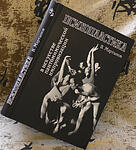

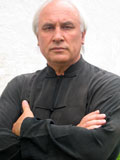 Коан – вопрос к членам Федерации Юн Чун Цюань от президента В.В. Мартынова: «Что Вы сделали для Федерации из того, что не мог бы сделать любой другой за деньги?»
Коан – вопрос к членам Федерации Юн Чун Цюань от президента В.В. Мартынова: «Что Вы сделали для Федерации из того, что не мог бы сделать любой другой за деньги?»
